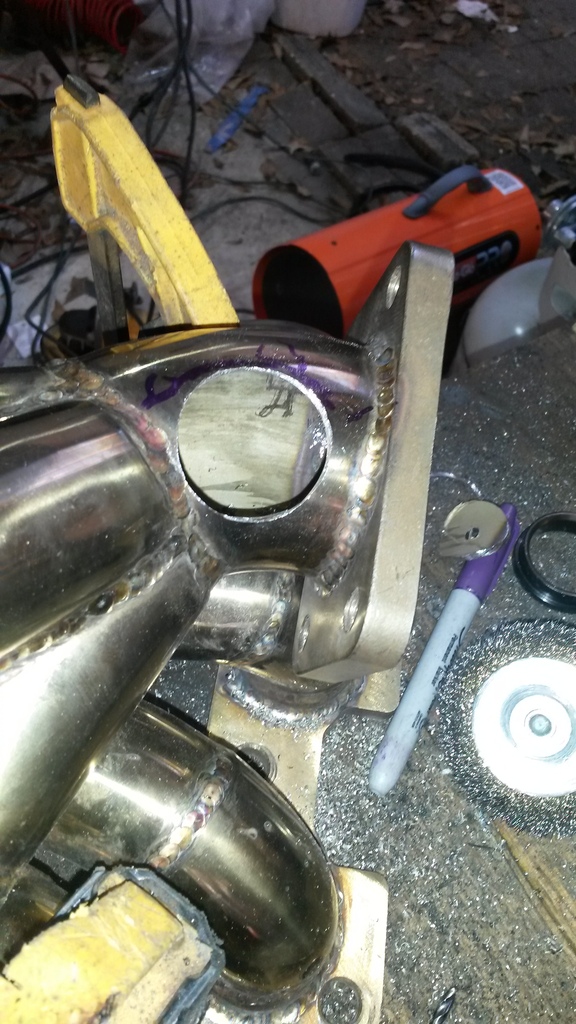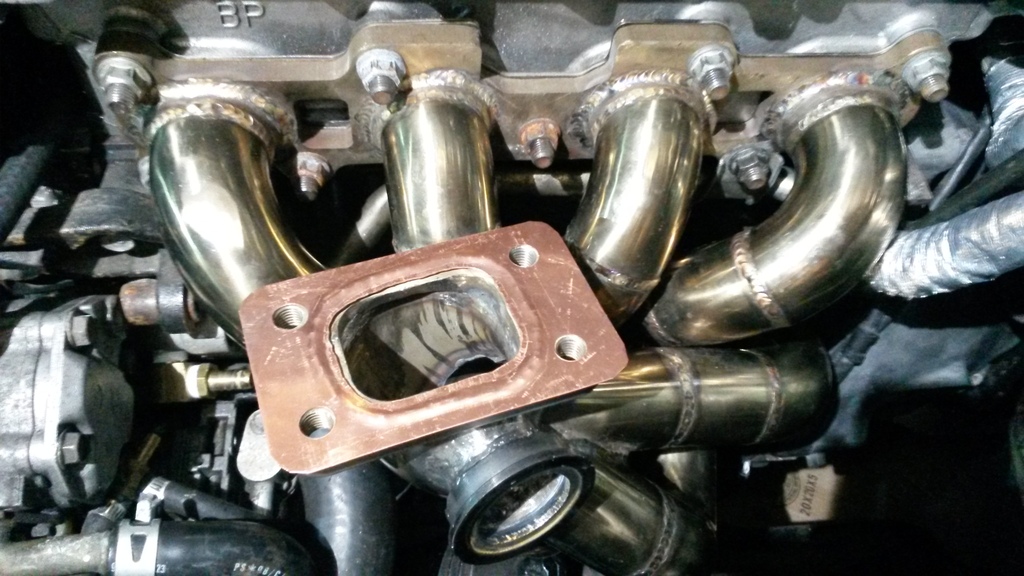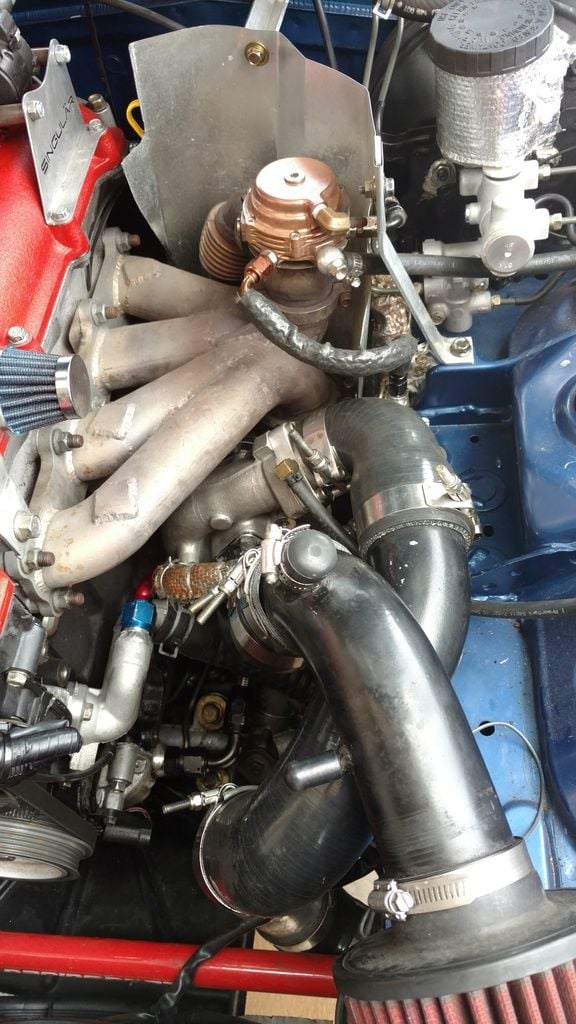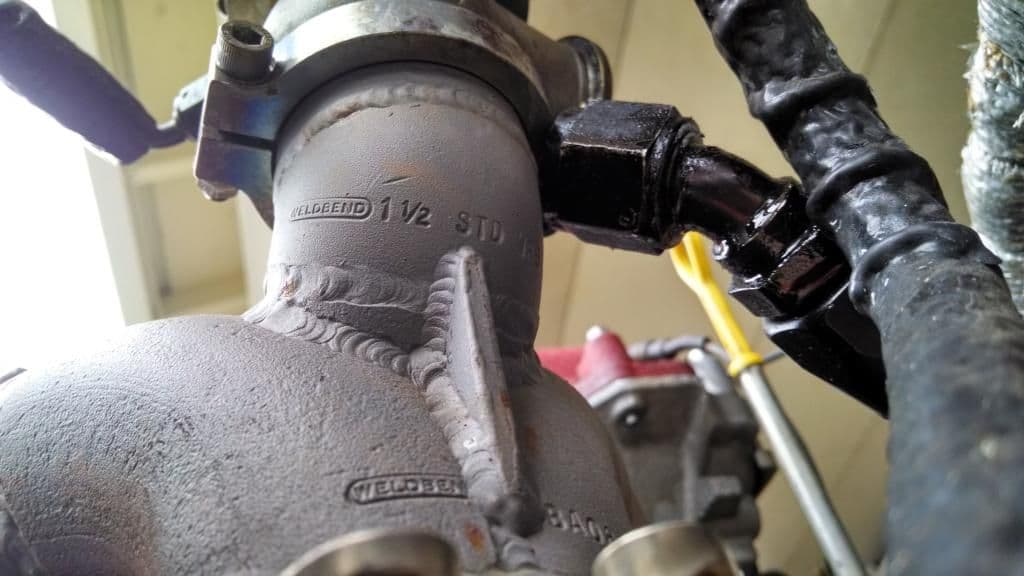Steampipe manifold failure
#42
Elite Member
Thread Starter
Join Date: Apr 2010
Location: Newcastle, Australia
Posts: 2,826
Total Cats: 67
Thankyou,
Nothing particularly standout about it, just built properly and consistent welds.
Im going to better prepare my materials as best I can, do wider welds, and use gussets.
Dann
Nothing particularly standout about it, just built properly and consistent welds.
Im going to better prepare my materials as best I can, do wider welds, and use gussets.
Dann
#43
The other thing I have noticed is that no one braces their turbo so the full weight of the turbo is on the manifold. I was told by Southeast Power Systems' turbo guy that this is just unacceptable on a road race car. A cast manifold can handle that abuse but a welded manifold needs to have the weight of the turbo supported by a brace to the block just like every OEM does from the factory. I need to do this on my own setup. He said you should be able to remove any one piece of the manifold, turbo, downpipe combo with no movement from the other two pieces.
#45
mkturbo.com


iTrader: (24)
Join Date: May 2006
Location: Charleston SC
Posts: 15,177
Total Cats: 1,681
The other thing I have noticed is that no one braces their turbo so the full weight of the turbo is on the manifold. I was told by Southeast Power Systems' turbo guy that this is just unacceptable on a road race car. A cast manifold can handle that abuse but a welded manifold needs to have the weight of the turbo supported by a brace to the block just like every OEM does from the factory. I need to do this on my own setup. He said you should be able to remove any one piece of the manifold, turbo, downpipe combo with no movement from the other two pieces.

I was rocking a brace 5+ years ago.
#46
SADFab Destructive Testing Engineer


iTrader: (5)
Join Date: Apr 2014
Location: Beaverton, USA
Posts: 18,642
Total Cats: 1,866
The other thing I have noticed is that no one braces their turbo so the full weight of the turbo is on the manifold. I was told by Southeast Power Systems' turbo guy that this is just unacceptable on a road race car. A cast manifold can handle that abuse but a welded manifold needs to have the weight of the turbo supported by a brace to the block just like every OEM does from the factory. I need to do this on my own setup. He said you should be able to remove any one piece of the manifold, turbo, downpipe combo with no movement from the other two pieces.
#47
I think you're over thinking it. The turbo moves with the motor. He was most concerned with just supporting the weight which just requires brace to the block. He mentioned that it could even be as simple a steel tube with bolts through crushed ends if you wanted to do it on the cheap. Sure there will be some expansion from heat but weight from the turbo will crack the manifold far faster. I'm not a metallurgist or engineer but I'm pretty sure this guy is an engineer and he has been doing this for 30+ years. I'll take his word for it.
#48
Elite Member
Thread Starter
Join Date: Apr 2010
Location: Newcastle, Australia
Posts: 2,826
Total Cats: 67
My concern has always been that I dont know if the brace will just concentrate force somewhere as the manifold expands.
I guess the force of the turbo weight X g-force is higher..?
Dann
I guess the force of the turbo weight X g-force is higher..?
Dann
#49
I've cracked a lot of manifolds. also fought with keeping the turbo bolted up. Had the best luck for fabricated manifolds by making them out of mild steel schedule 40. I think this is because it has lower thermal expansion than stainless closer to cast Iron. having said that at best I think I could get a full year of track days out of one before it would need some sort of repair. how its welded and gussetted to the turbo flange is critical. I make gussets out of 1/2" round bar on the back side of the flange. I countersink the stud holes through the flange into the round bar. use 10mm Inconel studs about a half inch longer set in helecoils and stage 8 nuts. the longer bolts make them more spring like and able to maintain clamp load without stretching better. My turbo also has an extra bracket so it is mounted on a diving board to the block similar to a stock Mazdaspeed. The other thing that is critical is proper support for the downpipe at to the transmission bellhousing, loose that support and your manifold or turbo to manifold joint is gone in one session.
#51
Also if you look at the pics spencer9474 posted here, you can see there's a sharp angle change where the weld failed. It was not radiused, which puts a huge stress riser (bad weld design). His repaired manifold shows that weld is better, but still not a smooth radius into the pipe. Putting a big stress riser there is asking for a failure, and that is something anyone can change.
This is my manifold. I didn't make it (it's a cx racing manifold) but I did weld a pipe to for an external gate. I radiused the weld going from the pipe into the base material, you can see the smooth radius in the 2nd pic where the pipe joins the manifold.


#53
I am now. Was running ebay cast iron, but wanted something that flows better and does not point all the cylinders into each other. This manifold required several modifications to make it work, all documented in my build thread. I should have just made my own, this one looked nice but didn't fit right.
#56
it's very rigid. super thick. we've discussed this eleventy billion times now, not sure why people still don't know about the msm brace lol
btw most (all?) oem turbocharged cars like the msm use something very similar. I'd love to see a version of it modified to work with the custom tubular bottom mount setups
btw most (all?) oem turbocharged cars like the msm use something very similar. I'd love to see a version of it modified to work with the custom tubular bottom mount setups
#57
it's very rigid. super thick. we've discussed this eleventy billion times now, not sure why people still don't know about the msm brace lol
btw most (all?) oem turbocharged cars like the msm use something very similar. I'd love to see a version of it modified to work with the custom tubular bottom mount setups
btw most (all?) oem turbocharged cars like the msm use something very similar. I'd love to see a version of it modified to work with the custom tubular bottom mount setups
#59
Its like 1/8" steel somewhat springy in the vertical direction you can kind of flex it a bit by hand but not much. on the B6 and BP GTX it was two piece thick cast Iron part to the block and a flat steel part bolted to the turbo. I built mine more the later style to bolts of the engine mount to the block with a thick bracket and two bolts I can access from the top to a steel plate that bolts to a single boss added to the turbo outlet flange. as long as that connection and the downpipe connection stay in tact with the gusseting I do around the turbo flange plus Inconell studs I can get about a years worth of track abuse out of it without too much fuss. I see allot of setups on here that wouldn't last one track event.















